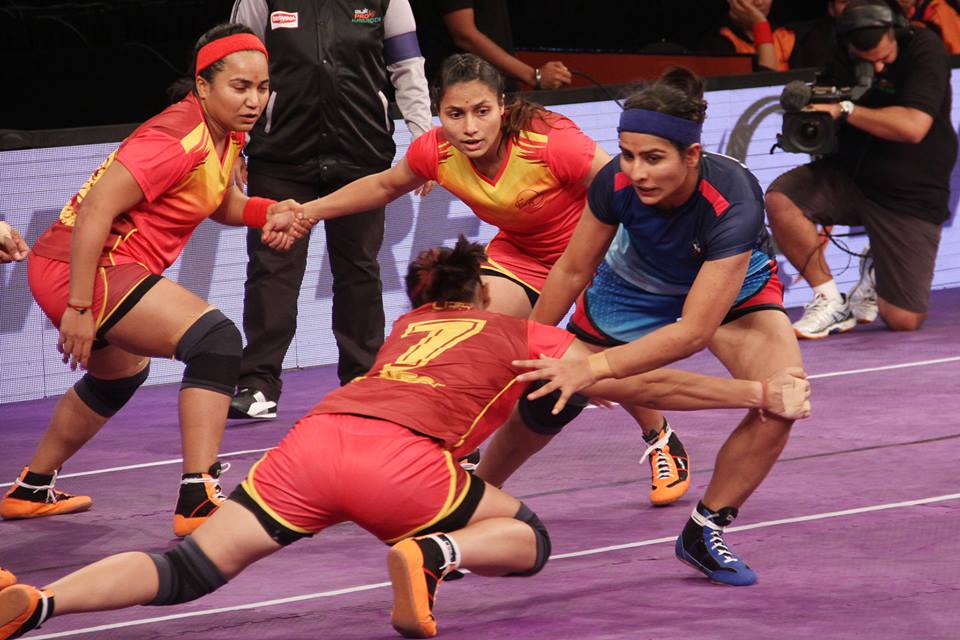Pro Kabaddi has shown how to handle women's sport: Are you watching BCCI?

Winter had set in, and it was late in the evening. As the sun went down over the Hooghly river, the Australian cricket team went on a victory lap around the historic ground of Eden Gardens as 80,000 spectators cheered them on. It was a women's cricket match, it did not feature India, yet, the ground was filled to the brim. Rows and rows of Indian men and an almost equal number of women cheered on as Australia defeated New Zealand in the 1997 final to lift their fourth World Cup.
It was the second time the women's World Cup was hosted by India. The first one, in 1978, did not have any sponsor. The 1997 edition, however, turned out to be a huge success—Hero Honda were the main sponsor of the tournament, and it generated huge interest throughout the nation. The final was preceded by a glittering ceremony, and the record attendance was expected to be the shot in the arm that women's cricket had badly needed in the nation.
Yet, India failed to capitalize on the momentum, and nothing really changed in the years which followed. Disparity between the status of the men's and the women's version of the sport has only increased over time, and it is completely down to the players that they have still managed to stay competitive despite such a handicap.
Since that merger (in 2007), the BCCI has organized just one Test match for the women's team.
Since the ICC-forced merger between the Women's Cricket Association of India (WCAI) and the BCCI in 2007, the game has only gone backwards. In fact, since that merger, the BCCI has organized just one Test match for the women's team—the single Test against South Africa in 2014 in Mysore. One Test match in the last 9 years!
In spirit, the BCCI should manage both the men's and women's cricket in this nation, but clearly the latter was forced upon them.
The advent of the Indian Premier League in 2008 changed the face of Indian domestic cricket. Superstar-backed franchises, world class foreign cricketers, cheerleaders, multilingual coverage—and suddenly the league started to generate more interest than even some of the International matches the national team was playing. Along with the interest, it also generated jaw-dropping volumes of cash.
You would have expected, or at least hoped, that some of that revenue would be channeled into women's cricket. The obvious next step would be to start an IPL-styled women's T20 league, but even after nine seasons of the IPL, the BCCI is still 'mulling' over the option.
Following IPL's popularity, Cricket Australia came up with the Big Bash League in 2011. In 2014, CA announced that a women's league is in the early stage of planning, and just a year later, the Women's Big Bash League came into existence. It turned out to be a huge success with the TV ratings exceeding well above the initial expectations.
The England and Wales Cricket Board (ECB) also rolled out an IPL-style league of their own in 2014—the NatWest T20 Blast. Next month, just two years since the formation of the men's league, ECB are set to start the Women's Cricket Super League, with six teams participating in the inaugural season.
Cricket boards across the world are cashing in on the popularity of T20 cricket and using it to put women's cricket under the spotlight. In view of these developments, the BCCI is still in the stone age. It was only last year that the BCCI awarded women cricketers central contracts long after even a conservative nation like Pakistan had successfully implemented this. The impact was instantly visible. An uplifted Indian team toured Australia and defeated the reigning ODI champions in the ODI series(they were also the reigning T20 champions at that point) and defeated them 2-1 in the T20 series.
The likes of Mithali Raj and Harmanpreet Kaur, now been signed by defending WBBL champions Sydney Thunder, shone through in that series, along with a host of young talents like Smriti Mandhana and Veda Krishnamurthy. Sadly though, many such young talents do not have the platform to make their mark in India presently.

 Harmanpreet Kaur - One of the brightest talents ©
Harmanpreet Kaur - One of the brightest talents © For men's cricket, the IPL has acted as a stage for unknown talents to announce themselves to the world. Something that is not afforded to the women at the moment.
The BCCI need not look beyond the border for guidance on how to handle women's sports though. Last night, just 7 kilometers north of the BCCI's headquarters in Churchgate, Mumbai, Firebirds and Ice Divas kicked off the Women's Kabaddi Challenge at the Sardar Vallabhbhai Patel Stadium.
It was a spectacle which matched the men's match between Puneri Paltan and Dabang Delhi, which preceded it, and the background work, which ensured such a spectacle, was started two years ago.
The organizing committee scouted national and local tournaments across the country and pulled together 60 of the most-talented women Kabaddi players in India. The list was further trimmed down to 42 following which they were taken in for a month-long residential training camp in Mumbai.
However, their training was not limited to what they did on the court. The players were groomed to face the camera and media attention which would follow such a league and its players. From mock interviews and television appearances to manicures and pedicures—they left no stone unturned. The red streaks on the hair of the Firebirds' players were noticeable on Tuesday night, and it was an outcome of the styling regimen they were put under.
The players attended Zumba classes, and participated in dance-offs, in order to open up and gain the confidence of making public appearances. They were groomed to be stars, and only few months back, these women did not have anything but kabaddi in their lives.
Pro Kabaddi league is into its 4th season, and it has been gaining popularity exponentially every season. In fact, the league has already seen a hike of over 50% in their sponsorship deals compared to last year. But unlike the BCCI, they are looking to channel this popularity elsewhere. They are willing to invest money and time into building a women's league, and they are making sure that these girls grab the attention of the audience.
Somehow, the women's teams, be it cricket, football, or hockey, are not considered to be a part of the national identity, that the masses so feverishly relate to when it comes to the men's teams.
Traditionally in India, women athletes have done better in individual sports than team sports. Both in terms of popularity and success. In fact, according to the last report published by ESP Properties-SportzPower, Sania Mirza, Saina Nehwal, and Mary Kom account for 40% of endorsements in non-cricket sports in India. However, with a glass-half-empty lens, it is a mere reflection of the general apathy towards women's team sports in this nation. Somehow, the women's teams, be it cricket, football, or hockey, are not considered to be a part of the national identity, that the masses so feverishly relate to when it comes to the men's teams.
The Pro Kabaddi league is trying to change that, and it is heartening to see that the new regime in the BCCI is also showing signs of softening. After finally providing central contracts to the women cricketers, the BCCI has now decided to allow the women's cricketers to participate in foreign leagues, albeit a year late.
With the World Cup being hosted in England next year, the BCCI missed out on a crucial chance to help the players get acclimatized with English conditions by allowing them to participate in the inaugural Women's Cricket Super League. The WCSL and WBBL teams have already acquired their squads, and will now only look to plug the gaps in the preceding seasons—which in turn means that there will be far less opportunities on offer for the Indian women players to play in these leagues.
The BCCI seemed to have missed the bus, but they can still catch the flight. Women's IPL is the need of the hour, and this Anurag Thakur-led regime is seemingly more open to the idea than its predecessors. The Pro Kabaddi League has done it with a sport that is not half as popular as cricket, and the BCCI should take notice-for once.

Comments
Sign up or log in to your account to leave comments and reactions
0 Comments